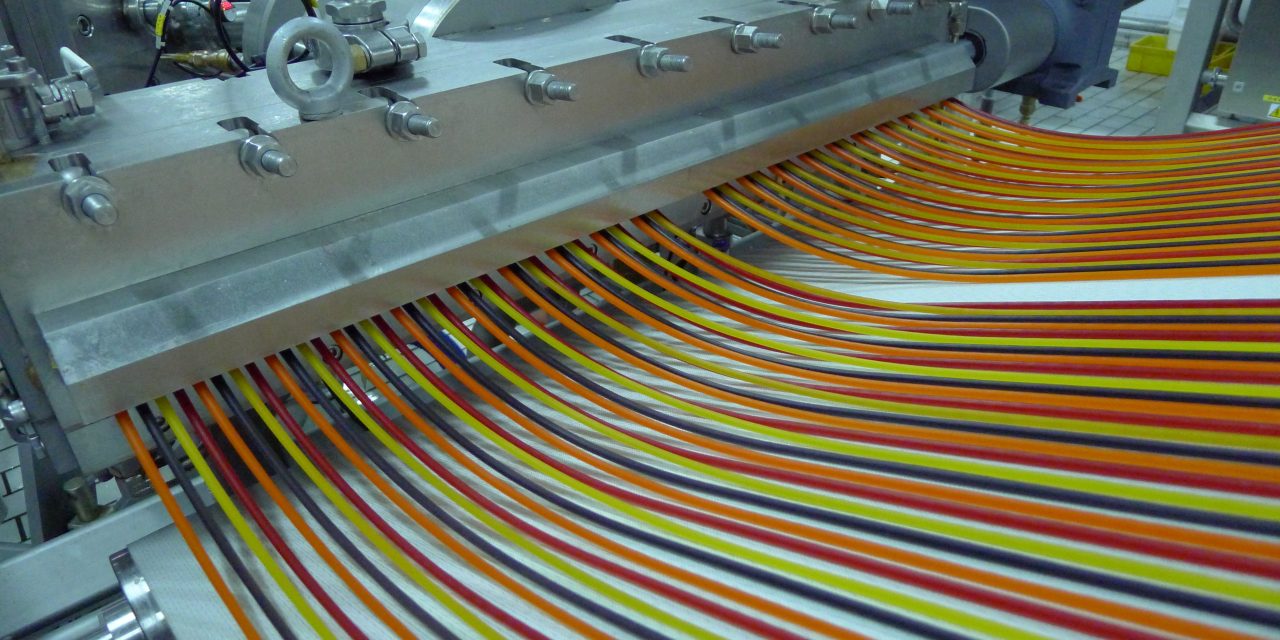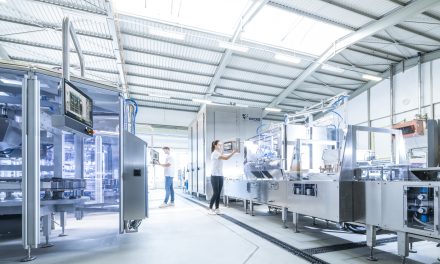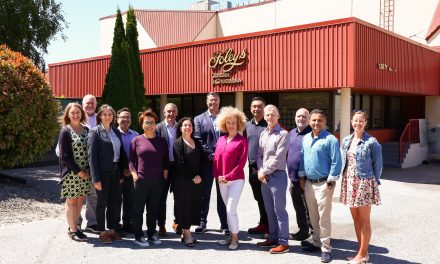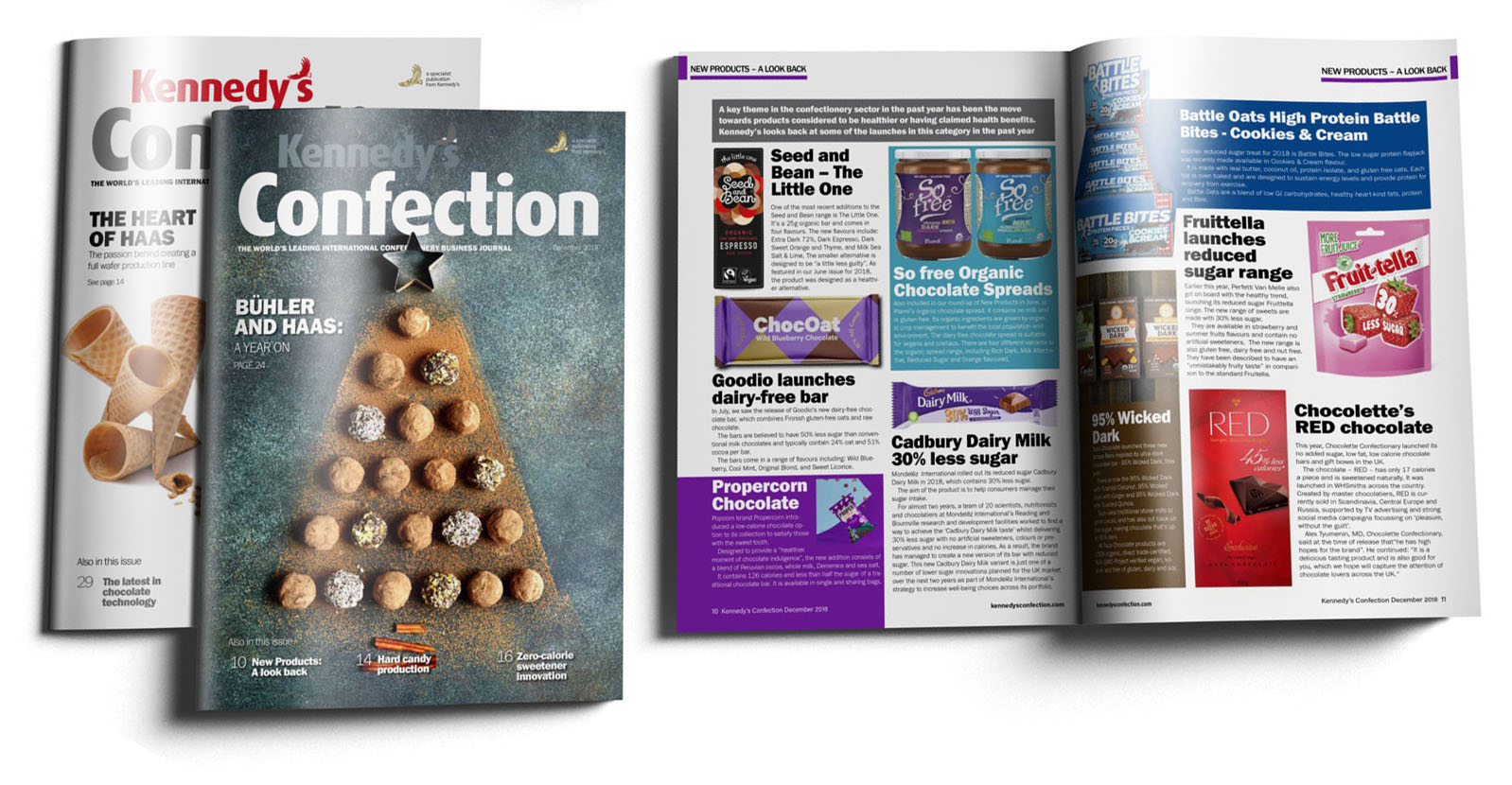Suzanne Callander finds out how new forming and extrusion technology can give the flexibility to overcome consumer and operational challenges.
When I ask Stuart Grogan, operations director at BCH, what he believes consumers are looking for today when it comes to extruded or formed candy, he says that BCH has identified a significant increase in demand for extrusion lines to create extruded confectionery, and that the company is also seeing a continuing and growing trend for consumers looking for confectionery with lower sugar content as well as product offerings that provide some nutritional benefits.
The result of these consumer trends has led to confectionery producers showing more interest in extruding and forming equipment that offers the ability to introduce a greater range of ingredients. To achieve this there is a requirement for solutions that offer more flexibility than some traditional equipment, to enable confectioners to tap into fast changing consumer trends.
“When it comes to forming and extruding technology, confectionery producers should be looking for solutions which can offer them the maximum amount of flexibility,” says Stuart.
Forming and extrusion equipment providers have responded to these demands by developing new generations of extrusion lines that allow for faster switch overs – for example from liquorice to 100% fruit products – without the need to change equipment.
“In addition to offering the required flexibility, having the option of a common extrusion line that is able to create multiple product types will minimise plant footprint and the need for manual input, offering savings on valuable space on the factory floor and on labour usage/costs,” continued Stuart. “BCH, for example, is now able to offer a solution that can deploy multi-coloured starch gel and two additional centre fillings, or sandwich style products.”
The need for flexibility cannot, however, come at the expense of hygiene so a strong focus must remain on the ability to offer effective ‘clean in place’. “It is vital that the core cooking, extrusion and forming/twisting dies can be truly cleaned in place,” says Stuart. “The latest systems on the market can deliver cleaning reports that include the monitoring of the temperature and detergent concentration over various cleaning cycles.” This, of course, allows them to meet the growing demand for more effective cleaning in addition to evidencing that due diligence protocols for confectionery manufacturers are being adhered to, and ultimately will also enable confectioners to be ready for any future changes in legislation.
Stuart goes on to explain that, whilst preserving the theme of flexibility, confectionery producers are also looking to minimise the amount of manual input required for operation. Energy consumption is another concern as the confectionery industry, along with everyone else, battles ever rising energy costs against the market pressure of consumer spending.
The latest generation of forming and extrusion equipment needs to be designed to address the need for energy reduction. BCH’s latest offerings, for example, using between 50/60% of the energy that would be required to power older-generation solutions. “The latest generation of extruders have been introduced to yield an operating lifecycle up to three times longer too, along with reduced maintenance requirements. Equally, these new offerings are available at a fraction of the cost of older technology versions, due to their design and use of the latest manufacturing processes,” explains Stuart.
There are other benefits to be found by employing modern technology – efficient automatic start up and shut down procedures, for example, can help reduce product waste. “Stand-by colour and flavour injection systems allow some SKU switches without even having to stop the line which can considerably increase system up time,” points out Stuart.
A turnkey solution
BCH was set a challenge to provide a turnkey solution for a leading confectionery brand. The brief was to replace old and costly-to-operate technology, and to provide a solution that would allow the new product development (NPD) team to develop products that had not been possible with the original extrusion and forming technology employed.
The main technology features that convinced the confectionery company to replace its old, outdated equipment and to adopt new technology solutions included:
- Raw material delivery (wet/dry ingredients) to the kitchen system – The new system was fully automatic which helped reduce labour costs and also mitigated the risk of non-compliant product due to human error. The new solution also incorporated the ability to introduce new ingredients under controlled conditions, enabling healthier and functional products to be developed.
- The new kitchen system allowed the production of liquorice slurry, a premix for new 100% healthy fruit snacks and also the production of multiple centre filling options for single or multiple co-extruded products.
- Combined cooking, evaporation and extrusion processes – The incorporation of these three previous independent processes into a single process has extended the possibilities of the system, which is all managed by an intelligent control system.
- Automatic colour and flavour dosing application – The new system was designed to allow the dosing of some functional ingredients that were being introduced under a new range of products.
An SME-sized solution
We move to the United States to report on a small, medium sized enterprise (SME) bar maker that wanted to upgrade from its original clunky and slow forming machine. However, the company assumed that a new bar-making line would be out of its financial reach. The chief operating officer (COO) therefore began researching used equipment but was disappointed to find that the best option available to the company would potentially pose maintenance issues as the company did not have its own in-house engineering department. The worry was that the originally imported second-hand line would have some communication gaps when it came to service provision.
The COO therefore turned his attention to new entry-level bar forming options and came across Egan Food Technologies, where he identified a potential solution that could meet the company’s needs – with a forming line that starts at $95,000.
The COO flew to Egan Food Technologies’ Michigan headquarters to receive training on the production line before the equipment was delivered to the facility. With remote engineering support from Egan, the company was able to start up the new equipment and very soon it was producing up to 12,000 bars per hour – a significant increase from its previous production rate of around 2,000 bars per hour.
The COO was delighted with the solution which he says is easy to clean and maintain and which has also enabled more accurate control of bar weight that has resulted in savings on material costs.
The company has also seen savings on labour costs as it is possible to man the new forming line with just one or two people daily. The solution can also be expanded, with the addition of more equipment, so it will be able to grow with the company over time.
The above case study proves the point that the cost of adopting new technology, which is employed on the latest generation of forming and extruding equipment, can offer fast returns on investment. It is important to think past the purchase price and to also take into consideration the costs required to maintain older outdated equipment and the increased throughputs that are possible with new equipment due to their greater flexibility. Finally, a consideration that will only continue to grow in relevance is energy. According to energy solution provider, Centrica Business Solutions, energy can account for up to 15% of a food manufacturers’ costs. As well as affecting the business’s bottom line, poor energy efficiency has negative environmental consequences. New equipment, however, is designed with energy savings in mind, which can help you become more energy efficient and will also improve your carbon footprint.
Filling a forming gap
According to Wikipedia, fudge ‘is a type of sugar candy that is made by mixing sugar, butter and milk, heating it to the soft-ball stage at 115°C, and then beating the mixture while it cools so that it acquires a smooth, creamy consistency.’ Pictures accompanying this description are of traditional fudge products – formed into a cube or parallelepiped shape using cutters, sometimes with inclusions and sometimes combining two or more flavours and/or colours. and milk, heating it to the soft-ball stage at 115°C, and then beating the mixture while it cools so that it acquires a smooth, creamy consistency.’ Pictures accompanying this description are of traditional fudge products – formed into a cube or parallelepiped shape using cutters, sometimes with inclusions and sometimes combining two or more flavours and/or colours.
The perception of fudge has not really changed much over the years. While traditionally, it has been possible to fill caramel or fudge candy using a chain-forming system, to achieve dense fillings of up to 25% of the product.
Nuova Euromec set out to develop a solution that would offer confectioners a new way to present fudge, by making a feature of the filling and helping the product to stand out from other fudge offerings in the eyes of the consumer.
Filippo Rizzi, Plant Operations Manager at Nuova Euromec, takes up the story: “Although we can already put a large amount of filling inside a chewy soft candy, the fudge or caramel cover that surrounds and protects the filling represents the greatest obstacle to its view and therefore to the immediate perception of it being a premium product.
“To meet the demand for a more innovative way to present filled products – and to create added value – we have developed a forming solution that makes the filling visible as in a candy cup. This chain system can also create products with larger amounts of filling, which is also immediately visible. We feel that this makes the product more inviting and amplifies its consumer appeal. The candy cup can hold a filling that forms up to 30% of the total weight of the product. It is also possible to achieve multiple combinations with different types of filling, such as liquid, cream, pectin, powder and solids geometrically regular, layered or side by side.”
Editorial contacts:
Features Editor: Suzanne Callander scallander@kennedys.co.uk
Editor: Kiran Grewal kgrewal@kennedys.co.uk







